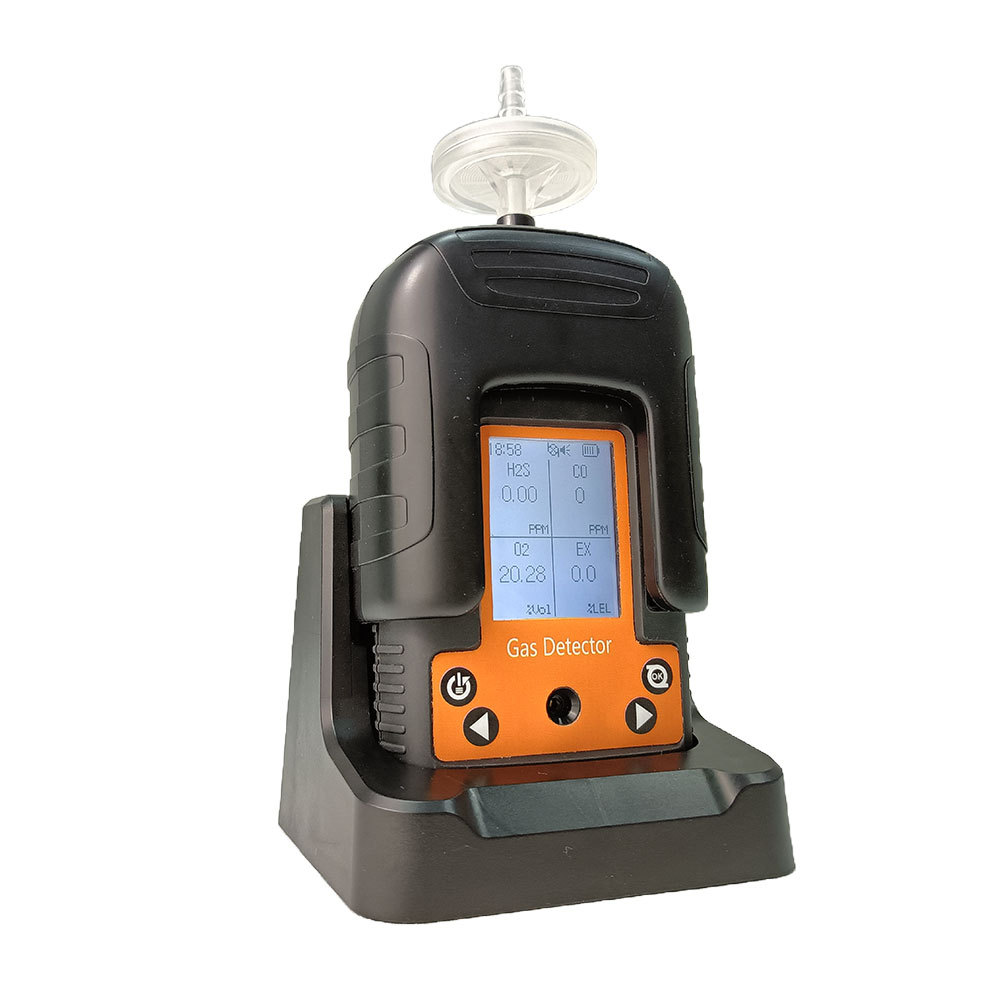- English
- Español
- Português
- русский
- Français
- 日本語
- Deutsch
- tiếng Việt
- Italiano
- Nederlands
- ภาษาไทย
- Polski
- 한국어
- Svenska
- magyar
- Malay
- বাংলা ভাষার
- Dansk
- Suomi
- हिन्दी
- Pilipino
- Türkçe
- Gaeilge
- العربية
- Indonesia
- Norsk
- تمل
- český
- ελληνικά
- український
- Javanese
- فارسی
- தமிழ்
- తెలుగు
- नेपाली
- Burmese
- български
- ລາວ
- Latine
- Қазақша
- Euskal
- Azərbaycan
- Slovenský jazyk
- Македонски
- Lietuvos
- Eesti Keel
- Română
- Slovenski
- मराठी
- Srpski језик
How convenient is the data transmission of the four-in-one portable gas detector?
2025-03-22
In many fields such as industrial production, environmental monitoring, and safety protection, the four-in-one portable gas detector has become a powerful tool for ensuring personnel safety and monitoring environmental quality with its versatility and portability. In actual use, the convenience of data transmission is undoubtedly one of the important indicators to measure its performance. So, how does the four-in-one portable gas detector perform in data transmission? The following is the sharing of Zetron Technology Editor.

The four-in-one portable gas detector shows a high degree of convenience in data transmission, which is mainly due to its diverse transmission methods and intelligent functional design.
Diverse transmission methods
1. Wired transmission: The four-in-one portable gas detector can be connected to a data receiving device (such as a computer, data recorder, etc.) through a cable or data cable to achieve real-time data transmission. This method of transmission is stable and reliable, and is suitable for situations where the detector and the receiving device are close.
2. Wireless transmission: The built-in wireless module of the detector supports the transmission of data to a smartphone, tablet or a dedicated data receiver through wireless communication technologies such as Wi-Fi, Bluetooth, and ZigBee. Wireless transmission is more flexible and convenient, and is suitable for scenarios where the detector needs to be moved or is at a certain distance from the receiving device. Some high-end models also support uploading monitoring data to the IoT platform in real time through a 4G traffic card. Users can view data at any time through a PC or mobile phone APP to achieve remote monitoring.
Intelligent functional design
1. Data recording and storage: Four-in-one portable gas detectors usually have built-in storage functions, which can store detection data in the device's internal memory, supporting two methods: cyclic storage and manual storage. In addition, the detector can also export detection data to external storage devices such as USB flash drives or computers through USB interfaces or other communication interfaces. Some advanced models also support uploading data to cloud servers for storage, making it convenient for users to view and analyze historical data at any time.
2. Remote monitoring and alarm: Through the wireless communication function, the detector can upload monitoring data to the IoT platform in real time, and users can view data remotely at any time. When the gas concentration is detected to exceed the standard, the detector can not only issue a local sound and light alarm, but also remotely push the alarm information to relevant personnel through the wireless communication function to ensure timely measures.
3. Intelligent calibration and compensation: Some high-end models of four-in-one portable gas detectors are also equipped with automatic calibration and automatic compensation functions, which can ensure the accuracy and reliability of the detection results and reduce the workload of manual calibration.
In summary, the four-in-one portable gas detector performs well in the convenience of data transmission. Whether it is a variety of transmission methods or intelligent functional design, it greatly meets the user's use needs in different scenarios. With the continuous advancement of technology and the continuous expansion of application fields, it is believed that the four-in-one portable gas detector will be more convenient and efficient in data transmission, providing more powerful support for industrial production and environmental protection.







